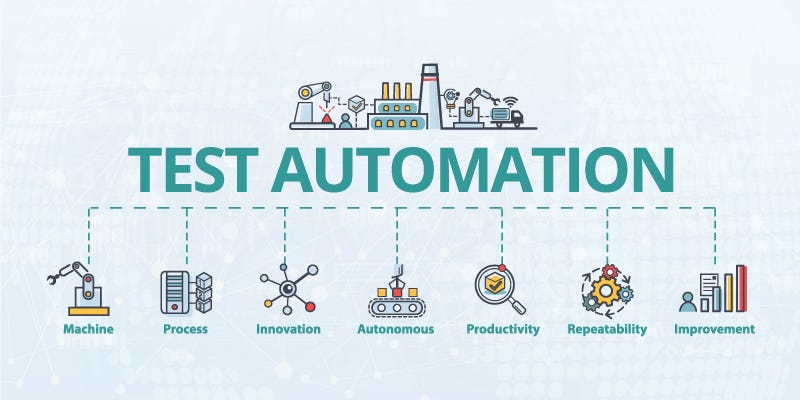From Manual to Automated Testing: A Comprehensive Overview to Transitioning Efficiently and Properly
In the realm of software program screening, the shift from guidebook to automated procedures has come to be a progressively vital change for organizations looking for to boost effectiveness and accuracy in their screening methods. The journey from manual to automated screening is not without its difficulties, but when come close to strategically and with a clear strategy in mind, the benefits can be significant.
Benefits of Automated Examining
Automated testing supplies numerous benefits, boosting efficiency and accuracy in software program growth procedures. Automated tests can be run simultaneously on multiple gadgets and operating systems, dramatically speeding up the screening stage contrasted to hands-on screening.
In addition, automated screening guarantees a higher degree of accuracy in spotting defects. Uniformity in testing is also boosted, as automated tests execute the very same steps precisely each time they are run.
Choosing the Right Tools

Firstly, analyze your purposes and demands. Comprehend the scope of your project, the technologies involved, and the capability of your group. This analysis will help you establish the abilities and features you require in your screening devices.
Second of all, think about the compatibility of the tools with your existing procedures and systems. Smooth integration with your current software program advancement lifecycle is vital to make sure a smooth shift to automation.
Additionally, review the scalability and versatility of the tools. As your screening needs develop, the tools need to be able to adapt and fit modifications efficiently.
Finally, consider the assistance and area around the devices. Durable support and an energetic individual community can provide beneficial resources and assistance when applying automated screening. By thoroughly considering these facets, you can choose the right devices that straighten with your requirements and established the stage for an effective transition to automated screening.
Writing Efficient Examination Manuscripts

When crafting test manuscripts, it is important to take into consideration the particular needs of the software being examined and guarantee that the manuscripts address all important functionalities. Detailed and clear naming conventions for test scripts and test instances can enhance readability and maintainability. Furthermore, including error handling systems within the examination manuscripts can help in determining and resolving issues quickly.
In addition, organizing test scripts right into modular parts can improve reusability and scalability, decreasing redundancy and boosting performance in test script upkeep. Normal testimonials and updates to test scripts are vital to equal evolving software application demands and capabilities. By following these principles, testers can create robust and efficient examination manuscripts that add significantly to the success of automated testing processes.
Integrating Automation Into Workflows
Efficient combination of automation tools right into existing process boosts and simplifies procedures performance within software program development cycles. When incorporating automation into workflows, it is essential to identify repetitive tasks that can be automated to save time and reduce human mistake. By flawlessly incorporating automated screening devices like Selenium or Appium into the software application advancement lifecycle, teams can achieve faster feedback on code changes, leading to quicker bug detection and resolution. This assimilation enables continual screening throughout the growth procedure, guaranteeing that any issues are identified beforehand, leading to higher software quality. Additionally, automation can be made use of to activate tests automatically after each code commit, providing instant try these out validation and freeing up testers to concentrate on more facility situations. Appropriate assimilation of automation tools requires collaboration in between advancement, testing, and procedures groups to establish a unified workflow that maximizes efficiency and efficiency in providing premium software.
Making Sure a Smooth Transition
Effectively transitioning to automated screening involves careful planning and cautious execution to minimize disruptions and make the most of performance in the software program development procedure - automation testing. To guarantee a smooth shift, it is essential to start by conducting a complete analysis of the existing screening procedures and determining areas where automation can bring the most considerable benefits. Engaging check it out with all stakeholders at an early stage while doing so, including developers, testers, and project supervisors, is critical for amassing assistance and buy-in for the automation effort
Interaction is essential during this transition stage. Clear interaction of the objectives, benefits, and expectations of automated screening aids to handle any type of resistance or issues that may arise. In addition, giving appropriate training and resources for staff member to upskill in automation devices and methods is vital for ensuring an effective shift.

Final Thought
To conclude, transitioning from handbook to automated testing uses many advantages, consisting of boosted performance and dependability. By choosing the proper devices, composing efficient test scripts, and integrating automation perfectly into workflows, organizations can make certain a effective and smooth change. It is necessary to accept automation as a useful possession in software application testing procedures to boost general high quality and productivity.
In the realm of software program screening, the shift from manual to automated procedures has become an increasingly essential change for organizations seeking to boost effectiveness and accuracy my review here in their screening methods. Automated tests can be run simultaneously on numerous gadgets and running systems, substantially speeding up the screening phase contrasted to hands-on screening. Uniformity in testing is additionally improved, as automated examinations carry out the same actions precisely each time they are run.To ensure the effective implementation of picked testing devices, the development of reliable examination manuscripts plays an important role in confirming the performance and performance of automated procedures - automation testing. By following these concepts, testers can create durable and effective examination scripts that add significantly to the success of automated screening processes